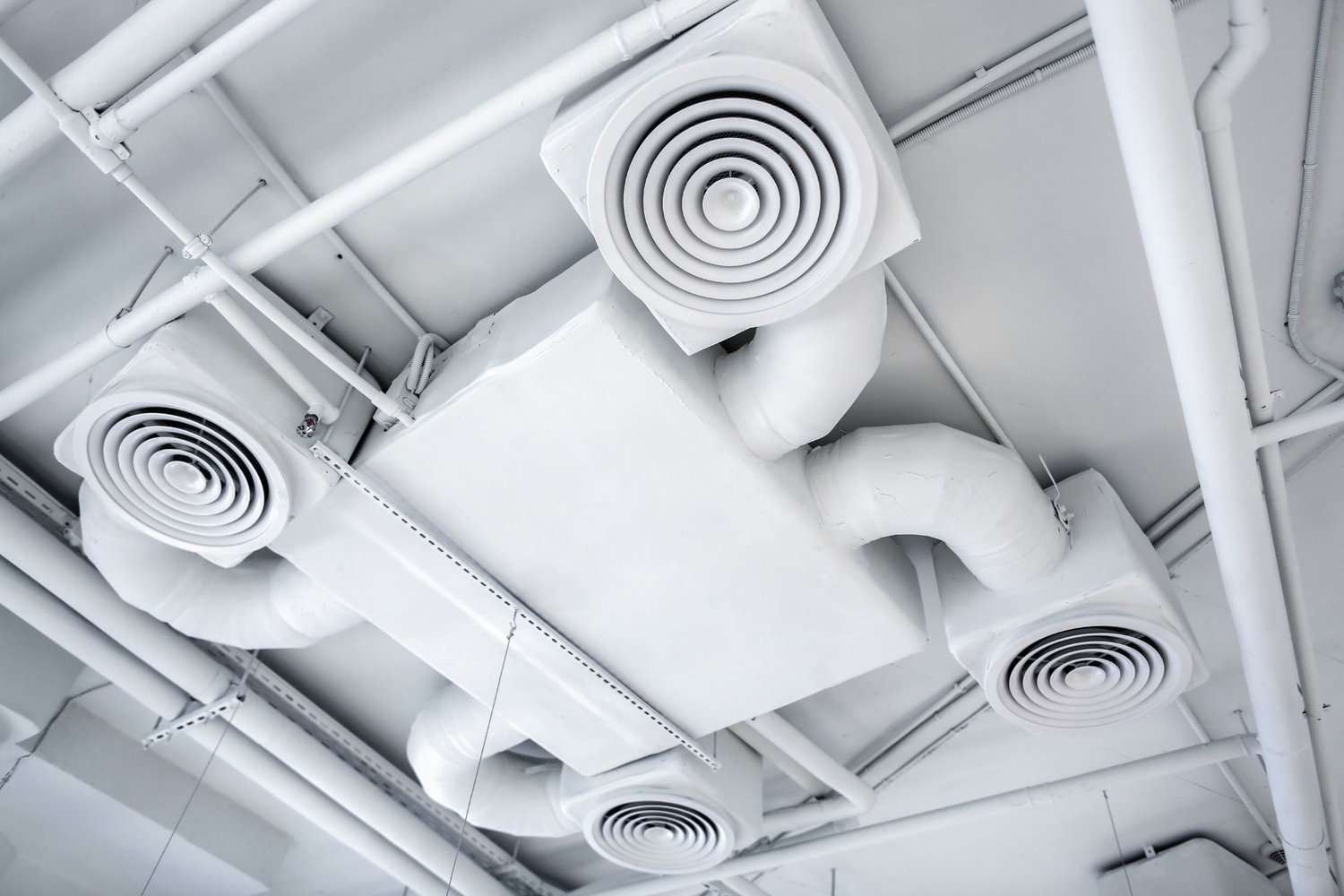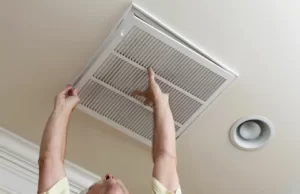Are you tired of breathing in stale, stuffy air in your home or workplace? Look no further than a heat-exchange ventilation fan. This innovative technology not only improves air quality but also helps save on energy costs. Whether you are looking for a solution for your home or an industrial setting, a heat exchange ventilation fan can provide efficient and effective air circulation. In this blog post, we’ll dive into a heat-exchange ventilation fan’s benefits, costs, and installation process. Say goodbye to stale air and hello to a breath of fresh air with this game-changing technology.
Understanding The Basics: What Is A Heat-Exchange Ventilation Fan?
A heat-exchange ventilation fan, also known as a heat-exchanger fan, is a cutting-edge technology designed to improve air quality in residential and industrial spaces. This innovative system transfers heat between incoming and outgoing air streams, allowing for efficient and effective ventilation. The basic principle behind a heat-exchange ventilation fan is simple: it uses two separate air streams, one coming from inside the building and one from outside.
These air streams pass through a heat exchanger, transferring the heat from the outgoing air to the incoming air. This means that in the winter, the heat from the indoor air is captured and used to warm up the fresh outdoor air before it enters the building. In the summer, the heat from the outdoor air is removed and transferred to the outgoing air, resulting in cooler indoor temperatures.
Home Ventilator Cost: Analyzing Installation Expenses
Installing a heat-exchange ventilation fan in your home comes with some upfront costs, but the long-term benefits make it a worthwhile investment. The home ventilator cost will depend on several factors, including the size of your home and the specific model you choose. On average, you can expect to pay between $2,000 and $6,000 to install a heat-exchange ventilation fan.
This cost includes the unit itself and any additional materials and labor required for installation. While this may seem like a significant investment, it’s important to consider the long-term savings. A heat-exchange ventilation fan can help reduce your energy costs by as much as 40%. By recovering the heat from the outgoing air, you’ll need less heating in the winter and less cooling in the summer.
This translates to lower energy bills and a more comfortable living environment. In addition to energy savings, a heat-exchange ventilation fan can also improve the overall air quality in your home. Constantly circulating fresh air helps remove stale odors, allergens, and other pollutants. This can lead to better respiratory health and a more pleasant living space.
Applications for Air Ventilation Units
Air-ventilation units have a wide range of applications and can be used in various settings to improve air quality and create a healthier environment. Let’s explore some of the key applications for air-ventilation units:
Residential Use:
Air-ventilation units are commonly used in homes to improve indoor air quality. They can help remove pollutants, allergens, and odors, creating a fresh and comfortable living space. These units are especially beneficial for homes with poor outdoor air quality or individuals with respiratory conditions.
 Commercial Buildings:
Commercial Buildings:
Commercial buildings, such as offices, schools, and retail spaces, can greatly benefit from air ventilation units. These units help circulate fresh air, remove stale odors, and maintain a comfortable working environment. In addition, they can reduce the spread of airborne contaminants, improving overall health and productivity.
Healthcare Facilities:
Air-ventilation units are crucial to maintaining clean, sterile environments. These units help control airborne contaminants and prevent the spread of infectious diseases. They are essential in operating rooms, isolation rooms, and laboratories.
Industrial Settings:
Industrial facilities, such as manufacturing plants and warehouses, often have high levels of airborne pollutants and contaminants. Air-ventilation units remove hazardous fumes, chemicals, and dust particles, ensuring employees a safe and healthy working environment.
Hospitality Industry:
Air-ventilation units can greatly benefit hotels, restaurants, and other hospitality establishments. These units help maintain a fresh and pleasant atmosphere for guests by removing odors and ensuring proper air circulation.
Industrial Ventilation: Why It’s Essential for Your Business
If you own or manage an industrial facility, you know how important it is to prioritize the health and safety of your employees. One crucial aspect of maintaining a safe working environment is proper industrial-ventilation. Industrial-ventilation is more than just a requirement; it’s essential for the success and longevity of your business. Industrial ventilation systems are critical in removing hazardous substances from the air, such as fumes, dust, and chemicals.
These systems ensure that employees are not exposed to harmful pollutants that can cause respiratory issues, allergic reactions, or long-term health problems. By providing a clean and healthy working environment, you protect your employees, increase productivity, and reduce absenteeism. Industrial-ventilation systems help regulate temperature and humidity levels in the workplace. This is especially important in industrial settings where high temperatures or humidity can impact employees’ well-being and machinery’s performance.
Getting Started With Ventilation Installation: A Step-By-Step Guide
Getting started with ventilation installation is an exciting process that will greatly improve the air quality in your home or workplace. Here is a step-by-step guide to help you navigate through the installation process.
- Assess your needs: Start by determining the areas of your home or workplace that require ventilation. Identify the rooms or spaces with stale air or poor ventilation. This will help you determine the type and size of ventilation system you need.
- Research ventilation options: There are various ventilation systems available, such as heat-exchange ventilation fans, exhaust-ventilation systems, and air-ventilation units. Research each option to understand their benefits and suitability for your specific needs.
- Consult with a professional: It is recommended to consult with a professional HVAC technician or ventilation specialist. They can assess your space, recommend the most suitable ventilation system, and guide the installation process.
- Plan the installation: Work with the professional to plan the installation process. This may include determining the ideal location for the ventilation system, calculating the required airflow, and ensuring that all necessary materials and equipment are available.
- Prepare the space: Before the installation, clear the area where the ventilation system will be installed. Remove any obstacles or obstructions to ensure smooth and efficient installation.
- Install the ventilation system: Follow the manufacturer’s instructions and the guidance of the professional to install the ventilation system. This may involve mounting the unit, connecting the necessary ductwork or pipes, and wiring the system to a power source.
- Test and adjust: Once the installation is complete, test the ventilation system to ensure it functions properly. Make any necessary adjustments to airflow settings or ventilation controls to achieve the desired results.
Harnessing Efficiency: Benefits of an Exhaust Ventilation System
One of the main benefits of an exhaust-ventilation system is its ability to remove stale air and circulate fresh air throughout a space. By constantly expelling stagnant air, the system effectively removes pollutants, allergens, and odors, leaving a clean and pleasant environment. This is especially important in spaces where the air can become stagnant, such as bathrooms, kitchens, and basements.
In addition to improved air quality, an exhaust ventilation system is crucial to energy efficiency. By expelling hot air in the summer and moisture in the winter, the system helps regulate temperature and humidity levels, reducing the need for additional cooling or heating. This translates to lower energy bills and a more comfortable living or working environment.
Another significant benefit of an exhaust-ventilation system is its ability to reduce the risk of mold and mildew growth. By removing excess moisture from the air, the system helps prevent conditions favorable for mold and mildew to thrive. This is particularly important in areas with high humidity levels or spaces prone to moisture buildup.
Maximizing Comfort: How a Heat-Exchange Ventilation Fan Improves Air Quality
A heat-exchange ventilation fan is not only beneficial for energy efficiency and cost savings, but it also greatly improves the air quality in your home or workplace. This innovative technology creates a healthier and more comfortable environment by constantly circulating fresh air and removing stale odors, allergens, and pollutants. With a heat-exchange ventilation fan, you can say goodbye to that stuffy feeling and hello to a breath of fresh air.
The system transfers heat between incoming and outgoing air streams, allowing for efficient and effective ventilation. In the winter, the heat from the indoor air is captured and used to warm up the fresh outdoor air before it enters the building. In the summer, the heat from the outdoor air is removed and transferred to the outgoing air, resulting in cooler indoor temperatures.
Not only does this technology provide a constant supply of fresh air, but it also helps reduce the need for additional heating or cooling. A heat-exchange ventilation fan can significantly lower your energy costs by recovering the heat from the outgoing air. This means you can enjoy a more comfortable living or working environment while saving money.
Maximizing Indoor Air Quality with a Heat Exchanger Fan
A heat-exchanger fan is your secret weapon when maximizing indoor air quality. This innovative technology not only circulates fresh air but also removes stale odors, allergens, and pollutants, creating a healthier and more comfortable environment. With a heat exchanger fan, you can say goodbye to breathing in stagnant, stuffy air and hello to a breath of fresh air.
This game-changing system transfers heat between incoming and outgoing air streams, allowing for efficient and effective ventilation. In the winter, the heat from the indoor air is captured and used to warm up the fresh outdoor air before it enters the building. In the summer, the heat from the outdoor air is removed and transferred to the outgoing air, resulting in cooler indoor temperatures.
Not only does a heat-exchanger fan constantly supply fresh air, but it also helps reduce the need for additional heating or cooling. By recovering the heat from the outgoing air, you can enjoy a more comfortable living or working environment while saving energy costs.
FAQ’s
1. How does a heat-exchange ventilation fan work?
A heat-exchange ventilation fan transfers heat between incoming and outgoing air streams. It uses two separate air streams, one from inside the building and one from outside, which pass through a heat exchanger. In the winter, the heat from the indoor air is captured and used to warm up the fresh outdoor air before it enters the building. In the summer, the heat from the outdoor air is removed and transferred to the outgoing air, resulting in cooler indoor temperatures.
2. How much does a heat exchange ventilation fan cost?
The cost of a heat-exchange ventilation fan depends on several factors, including the size of your home or workplace and the specific model you choose. On average, you can expect to pay between $2,000 and $6,000 for installing a heat exchange ventilation fan, including the unit itself and any additional materials and labor required.
3. What are the benefits of a heat-exchange ventilation fan?
A heat-exchange ventilation fan improves air quality by constantly circulating fresh air and helps save on energy costs by recovering heat from the outgoing air. This translates to lower energy bills and a more comfortable living or working environment. Additionally, these fans can reduce the spread of airborne contaminants, improve respiratory health, and create a more pleasant atmosphere.
Conclusion
A heat-exchange ventilation fan is a game-changer in improving air quality and saving energy costs. With its innovative technology, it constantly circulates fresh air, removes stale odors, and reduces the spread of contaminants. The upfront cost of installation may seem significant. Still, the long-term benefits, such as lower energy bills and a more comfortable living or working environment, make it a worthwhile investment. So say goodbye to stale air and hello to a breath of fresh air with a heat-exchange ventilation fan!

